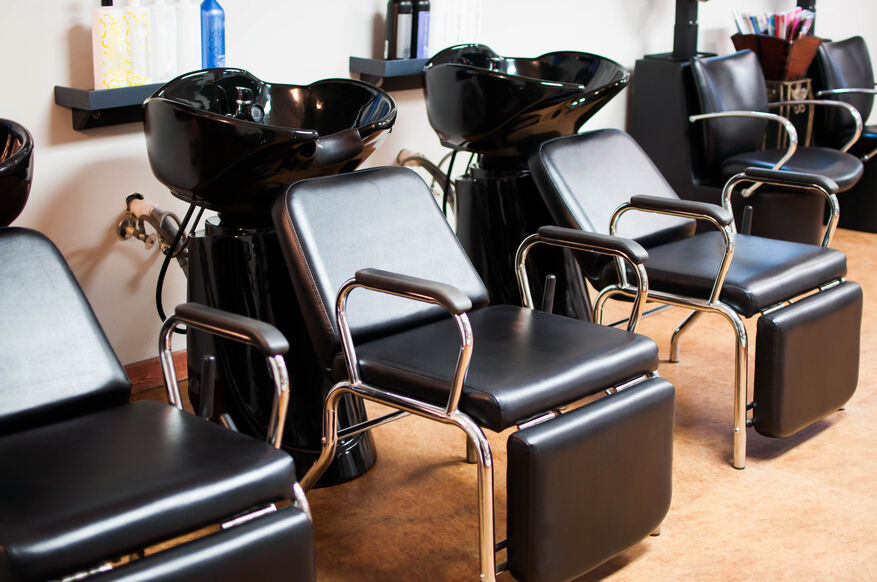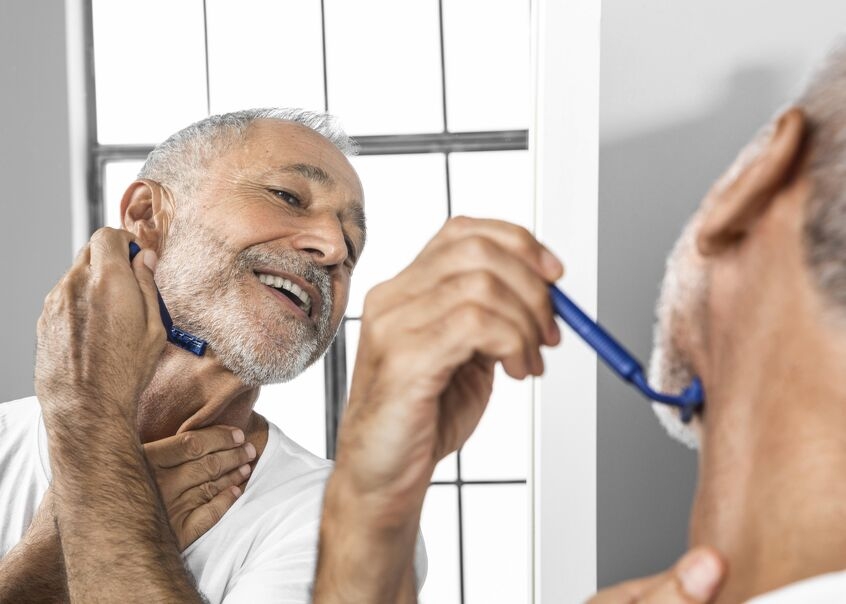Do you know the hot water recovery rate for your commercial water heater? From clean towels to satisfied tenants, hot water is essential for operations across many industries. But it’s not just about having access to hot water in your business; it’s about having enough hot water, quickly, when you need it. That’s where your water heater recovery rate makes a big difference in the long run.
What Is Hot Water Recovery Rate?
The term hot water recovery rate refers to the time it takes to heat a full tank of water after it has been depleted. In a commercial setting, this measurement is a necessity. With high demand, a rapid recovery rate makes the difference between happy and unhappy customers.
A water heater’s recovery rate is a calculated measurement of the amount of water in gallons that can be heated 100°F in one hour, expressed in gallons per hour (GPH). The power input of the water heater directly determines it. In electric water heaters, kilowatts will drive the recovery rate. In the more common gas water heaters, power is measured in BTUs (British Thermal Units), which is defined as the amount of energy required to raise the temperature of one pound of pure water by one degree Fahrenheit. The higher the BTUs, the faster the recovery rate.

If your hot water demand exceeds your system’s capacity to recover (the hot water recovery time), you’re left with cold water for your residents, tenants, or clients. A slow recovery rate can lead to all sorts of issues.
In the hospitality and service industry, reputation is everything. Customer complaints and negative reviews can damage your standing fast, and few things can ruin a customer’s experience quite like icy cold water.
But it’s not just about reviews and reputation alone. A poor hot water recovery rate can result in missed appointments, service delays, or limited offerings. Even worse, it can put your customers and clients at risk of illness and lead to fines for regulatory non-compliance.
No hot water is no small matter. Hot water is the backbone of many businesses and a crucial factor in maintaining hygiene and safety.
So, whether you’re overseeing a restaurant, a senior living facility, an apartment building, a gym, a salon, a spa, or a bed and breakfast, hot water is a non-negotiable. Here’s how to calculate your commercial business’s hot water recovery needs.
How to Calculate Your Hot Water Recovery Needs
To avoid coming up short, you’ll need to understand your business’s peak hot water demand. Industry standards, such as those from ASHRAE, provide guidelines to help you size commercial hot water systems, ensuring your hot water supply meets your needs.
Start with this standard formula to calculate the number of gallons of hot water you need from your commercial water heaters:
Peak GPH (gallons per hour) Demand = (# of users) × (gallons per use) ÷ (hours of use)
A 5-station salon that offers regular 30-minute appointments may require approximately 200 gallons/hour. A 20-unit apartment building might need 300-400 gallons/hour during morning shower time. At the same time, a 60-bed senior facility could require up to 800 gallons/hour for laundry, meal prep, and bathing.
Wondering about the best way to calculate for your business? Reach out to Reliable Water Services. We’ll help you get a professional assessment tailored to the needs and water usage of your facility.
In the meantime, here’s how recovery rate can impact several different types of businesses, and how to make sure that it doesn’t (negatively) impact yours.

For Salons and Spas, Hot Water is a Must-Have
In a salon or spa, hot water is a necessity for maintaining hygiene and providing a pleasant guest experience. Washing hair, sterilizing equipment, and prepping for facials and pedicures all require consistent hot water for smooth and sanitary service. A high-efficiency water heater can help ensure you meet demand, but there are factors to consider, such as the unit’s size and the target water heater recovery time.
Many state and local regulations exist in the beauty, spa, and aesthetics industries. State and local rules and licensure often require a minimum hot water temperature for proper sanitation.
Moreover, guests expect warm water during their treatments. Luxury services at a salon or spa are part of self-care, relaxation, and rejuvenation. Cold water is the antithesis of comfort and can undoubtedly damage your brand reputation. All it takes is one negative guest review or complaint to create a domino effect.
High-use equipment is a significant part of the health and beauty industries. Hydrotherapy tubs, steamers, and mani/pedi stations all increase the demand for hot water. It’s crucial that your hot water recovery rate can meet the needs of your visitors.
Just one outage in the middle of a busy weekend day can cost you dozens of appointments (or more). It’s worthwhile to understand your recovery rate so you can book clients appropriately, allowing them plenty of time to access the hot water they need for services.
Apartment Buildings Must Meet Tenant Expectations and Legal Obligations
Most apartment buildings and multi-family dwellings rely on centralized hot water systems to service their tenants. Whether the building houses dozens or even hundreds of tenants, a steady stream of hot water is a legal requirement with no exceptions.
Most housing habitability codes define hot water as a basic right. According to landlord-tenant law and housing code interpretations, landlords must provide a “safe and livable rental home”, which explicitly includes “sufficient hot water.”
This falls under the broader concept of the implied warranty of habitability, recognized across all U.S. states. That means hot water isn’t optional. Access to hot water is considered an essential service that tenants are legally entitled to. Some states have additional explicit requirements for reasonable amounts of running water and/or hot water that must be provided.
But beyond the legal obligations of a landlord, it’s also important to recognize that hot water access is part of meeting resident expectations. Most apartment buildings are managed like any business—meeting customer or client expectations is part of your success.
Tenants need hot showers, warm laundry, functioning dishwashers, and other basic living amenities. Without access to these services, you’ll quickly receive negative reviews and garner a bad reputation.
Centralized water systems are more efficient and easier to maintain than individual water heating units in each apartment or dwelling space. These systems also reduce overall energy waste and can offer improved temperature control.
If you own or manage an apartment building, a low water recovery rate can cause you major headaches. If your recovery rate can’t keep up with peak times (such as mornings and evenings), you’ll likely field complaints and possibly put yourself at legal risk unless the issue is immediately addressed.

Senior Living Facilities’ Hot Water Protects Residents
In a nursing home or senior care facility, hot water is more than just a matter of comfort. It’s an actual lifeline protecting the health and well-being of those in your care.
enior citizens are more vulnerable to infections, hypothermia, and temperature sensitivity. Thermoregulation is a concern for seniors, and warm water is critical for bathing, incontinence care, and daily hygiene. It’s a matter of infection control and health.
Hot water and appropriate detergents are a must for killing bacteria and viruses on linens, dishes, and other equipment. CMS and state regulations require that those in care have access to continuous hot water at set temperatures in patient rooms, kitchens, and bathrooms. Failure to comply with these guidelines puts your patients and residents at risk, and also puts you at risk of fines, loss of licensure, and even lawsuits.
Your staff members depend on fast-recovering water heating systems during peak shifts. It’s especially essential during morning routines and after meals, when demand for hot water is at its highest.
How to Improve Your Hot Water Recovery Rate
You’ve calculated your hot water recovery rate and come up a little short, or you’re hearing complaints of inconsistent hot water—these are sure signs that your recovery rate is too slow to meet your client demands.
Fortunately, there are a few steps that can improve your commercial water heater’s recovery rate (and it doesn’t necessarily mean you need a new water heater):
Use a Booster Heater: Booster water heaters are a good solution when installed at the point of use (like dishwashing stations). They offer a critical temperature “bump” for your traditional water heater, helping to maintain steady service and providing the main unit with recovery time.
Recirculating Pumps: Recirculating pumps keep the water moving through your pipes, reducing wait times and minimizing the risk of heat loss. A recirculation pump can reduce water waste, enhance user comfort, and facilitate faster perceived hot water recovery during periods of high demand.
Lower the Temperature: Check your water heater’s set temperature to determine if you can lower the thermostat to gain some extra recovery time. A water heater will replenish faster when set to 125°F, instead of the typical default of 140°F. While some businesses may need to maintain a higher temperature for sanitizing purposes, a lower setpoint between 120°F and 130°F is also safer and more energy-efficient.
Upgrade to Increase BTUs (or kWs): The power input of your water heater directly affects your recovery rate, regardless of storage capacity, so upgrading to higher-powered equipment with increased BTUs will definitely increase your recovery rate. Whether your water heater’s tank size is 50 gallons or 120 gallons, the number of gallons it can generate hourly is based entirely on your BTUs. Alternatively, you could also add another water heater, which will increase both your storage capacity and your hot water recovery rate.
Upgrade to a Higher-Capacity Tank: Store more hot water with a larger, commercial-grade tank water heater. Technically, this won’t directly impact your recovery rate, but you will have more hot water available to use at any given time. And if you only use half of it at once, your heater will only have to recover half a tank. A larger tank size increases capacity to help you meet peak demand, especially for facilities with simultaneous high-use needs, such as morning showers or back-to-back appointments.
Regular Maintenance: One of the most straightforward steps you can take is to schedule regular maintenance and checkups for your commercial water heater. The sediment buildup, the buildup of scale and rust, or a failing thermostat can vastly slow the recovery rate (and increase utility costs). Contact a professional to guarantee your system is working at optimal capacity.
Get the Right Size: Leasing a water heater through Reliable Water Services gives you access to expert sizing, routine maintenance, and emergency 24/7 support. You can avoid downtime and rest assured that your water heater is equipped to meet peak demand.
Hot water recovery is a make-or-break factor for your operations. It’s a must-have and must-understand concept for achieving customer satisfaction, code compliance, and accurate sizing. Protect your business and the people you serve by making sure your commercial water heating system can keep up with demand.
If you have questions about water heater replacement, increasing tank capacity, or shortening your water recovery period, contact Reliable Water Services today. We can help you find a hot water heater solution to meet your specific hot water needs, with professional plumbers to ensure your heater is operating at the optimal level for your business.